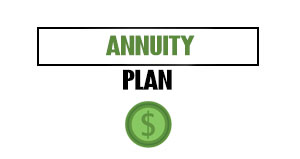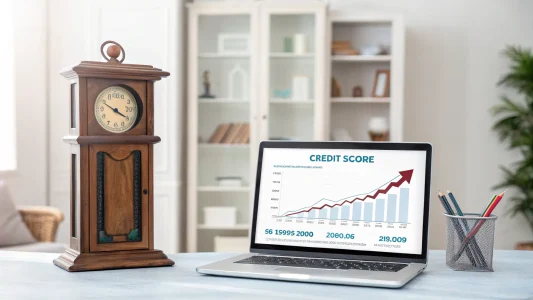Inflation feels as intimidating as ever in American life. Prices keep rising, squeezing household budgets in the U.S. According to the Bureau of Labor Statistics, consumer prices rose 2.9% in the 12 months leading up to August 2025. From health insurance to grocery prices, many people feel like their money just doesn’t stretch as far as it used to. But even though your purchasing power is being eroded steadily, you can still take small, practical steps that will protect your money. Here are eight ways to beat inflation this year and keep your finances on solid ground.
Table of Contents
Toggle1. Track where prices hit hardest
It’s important to track the prices of all your expenses no matter what inflation looks like. When you know where your money goes, you can manage your finances better and prevent emotions from affecting your buying decisions. Ask yourself:
- What unnecessary items are you buying?
- What costs are putting the most financial pressure?
Get answers to these questions as you evaluate your expenses. Whether it’s utilities, groceries, or the coffee you treat yourself to every day, tracking every detail helps you remain aware of your spending. Every penny adds up, so identify problem areas that quietly increase your expenses.
Check your receipts and bank statements, and note the items that are making your monthly expenses higher than they should be. Note the impulse buys and subscriptions. Do you really need them? Do you need to buy the brand name version? Is there a generic version?
Here are four ideas to make wise shopping choices:
- Don’t get a shopping cart if you’re just at the store for only one or two items. It prevents you from subconsciously filling it with unnecessary things.
- Try to avoid adding items you don’t need. Create a shopping list and stick to it to resist the urge to buy more.
- Plan meals with cheaper ingredients. Also try meal-prepping to cut costs.
- Seek alternative brands with lower prices to save money on groceries and essentials.
- Look for BOGO deals and shop near the end of the day for additional discounts.
2. Use higher savings rates
We all know how money can lose its value during inflation. What cost $5 in the past could cost you $10 as prices rise.
This is why you should look for a higher savings rate when inflation rises so your savings can grow faster than prices. Here’s what needs to be done to beat inflation with a higher savings rate:
- Consider opening a bank account that offers strong returns to protect the value of your money.
- Consider investing in Certificates of Deposit (CDs) that offer fixed interest rates. With this option, you need to deposit your money for a fixed period, and you receive a guaranteed return at the end of that term. Look for CDs that offer high interest rates.
- Invest in Treasury Bills (T-bills), which are short-term government bonds. Unlike CDs, you can convert T-bills into cash at any time without missing out on competitive returns.
3. Pay down high-interest debt
It’s always wise to pay off your credit cards and variable-rate loans to save during inflation. As prices increase over time, such debt becomes more costly. The more time passes, the more interest you need to pay.
Pay off your credit card bills monthly to stop debt from piling up. You can also opt for fixed-rate loans, where the interest rate does not change over time.
Consider debt consolidation to manage your loan payments better. Consolidation lets you combine debts into one account, secure a lower interest rate, and make repayment easier.
4. Invest in inflation-resistant assets
Certain assets can help you get high returns without losing money during inflation. It’s best to diversify your portfolio with a mix of inflation-resistant assets like these:
Dividend Stocks: These stocks let you earn profits without selling shares. Dividend stocks are shares from companies that also distribute profits to shareholders. Companies tend to pay higher dividends during periods of inflation.
TIPS: Treasury Inflation-Protected Securities (TIPS) are U.S. Treasury-backed investments that are inflation-resistant and potentially safer. The amount you initially invest (principal value) in TIPS increases with inflation. Interest rates are also calculated based on the increased principal amount. During inflation, investors can enjoy a higher principal amount and interest.
REITs: Real Estate Investment Trusts (REITs) are companies that own and operate income-generating real estate, such as apartment complexes and warehouses. Typically, during price hikes, the real estate industry booms, generating a higher income, which is why investing in REITs is often a good option to beat inflation. REIT investments are helpful for small investors who want to preserve the value of their money without facing the hassles of property management.
Real Assets: Invest in tangible assets such as gold, real estate, and commodities to preserve your money’s value. Commodities include grains, metals, energy, and currency. Gold, a physical asset, retains its value during periods of inflation, unlike many traditional currencies.
5. Automate savings/investing
If you’re waiting for your salary to come and manually saving up a portion of it, it could tempt you to spend more than you save. Consider automating your transfers. You might create an automatic savings plan to transfer a specific amount each month from your main account to a separate savings or investment account. Here are the best practices to automate your savings:
- Make sure you have a clear goal ahead. Decide whether you want to save for a home, a vacation, or something else.
- It’s crucial to think rationally when deciding how much money to save. Make sure to review your income and expenses carefully.
- Transfer your savings to a separate account to avoid spending them.
- Many banks provide services that let you set up recurring transfers. Such options help you automatically transfer money into your savings or investment accounts.
- If you schedule the money to be transferred as soon as you receive your salary, you don’t get the chance to spend it carelessly.
- Review your earnings, expenses, and progress each month. Adjust your savings amount as needed to align with your goals and financial circumstances.
6. Cut stealth inflation
Some costs seem so minor that you might not even notice them, but they add up over time with inflation. Have you checked how much you’ve spent on delivery fees over a year? The amount could be surprisingly high. Some costs stay hidden, like subscription fees and energy bills.
Here’s how you can cut down these hidden costs to beat inflation:
- Review your weekly and monthly expenses to find out the services and products you don’t actually need. For example, music streaming or a monthly beauty box subscription service.
- If you’re eating out regularly, consider packing a lunch from home for school or work.
- While shopping for groceries, look for store brands or more affordable versions of the same products you wish to buy to save money. Frozen foods are often less expensive and easier to store than fresh fruits, vegetables, and meats, making them an excellent option for saving money.
- A few simple steps could significantly reduce your home’s energy consumption. Simply fixing dripping faucets, replacing old appliances with energy-saving alternatives, taking shorter showers, and fixing faulty doors and windows could save you hundreds of dollars per month on your bills.
7. Protect your health to protect wealth
Inflation can impact all areas of your life, but it could make medical costs impossible to bear. Protecting your health now is not only about well-being; it is also about securing your wealth. When you’re unwell, you don’t have time to worry about costs. Your health is your number one priority. The best possible route is to stay prepared.
- Consider leveraging Health Savings Accounts (HSAs), which allow one to save for medical expenses in advance. The best part is that you don’t need to pay taxes on this money. Contributing to an HSA lets you reduce your taxable income and save enough for out-of-pocket medical costs.
- Try to prevent health issues rather than just save money for health expenses. Spending a few hundred dollars for screenings, check-ups, vaccinations, and healthy habits could save you thousands.
- Consider using co-pay cards or rebates to lower your medication costs. Sometimes, these options can cover your immediate expenses entirely. However, such options aren’t available for Medicare or Medicaid. Check with your pharmacy or the drug manufacturer’s website for available options.
- Paying in cash instead of using an insurance card is often way cheaper than you think. Paying out of pocket for minor medical expenses, such as blood tests, can help you save a significant amount. Check the amount you need to pay in cash vs. what you pay through insurance to see which is more cost-effective.
- Know exactly what your insurance plan covers, including its deductible and co-pays, before paying out a major medical expense. If your insurance plan doesn’t seem beneficial, don’t hesitate to switch over to something more affordable.
8. Revisit the plan yearly
Even your perfect plan needs a revisit at least once a year to keep beating inflation without fail. See if you’re making progress or your plan needs adjustments. Make sure you carefully examine your goals, budget, and investments.
Priorities can change. You may have been saving up for a down payment last year, but now you might want to save for a vacation. This is why updating your goals and adjusting your plan accordingly should take priority.
- Do a budget review once a year and look for unnecessary expenses to save money. For example, you might have unknowingly increased your overall expenses after a salary increase. But a careful review of your income and spending could help you spot such a thing and spend more wisely.
- Find out how much risk you’re willing to take, and adjust your investments accordingly. People often wish to take more/fewer risks based on their circumstances and goals.
- Life events can change your goals. For example, after having children or buying a new house, your priorities may shift significantly. Adjust your plan to beat inflation and align with your new priorities.
Beat Inflation with Resilient Finances
Inflation shouldn’t scare you; it just means you need to be smarter with your spending. The world has faced periods of severe inflation and financial hardship before and overcome them. You can too. Create a plan to cope with an inflationary economy rather than panicking unnecessarily.
An inflation-combating plan becomes successful with steady action and adaptation. Take small steps before big ones to make good habits. Keeping track of your expenses and income should give you a good head start in beating inflation.
Once you know what’s keeping you down, you can start preparing your list of strategies and begin implementing them. The eight strategies covered above will lower your financial struggles during inflation, and they will also help you strengthen your future with healthy spending and saving habits.
Photo by ArtHouse Studio on Pexels
















